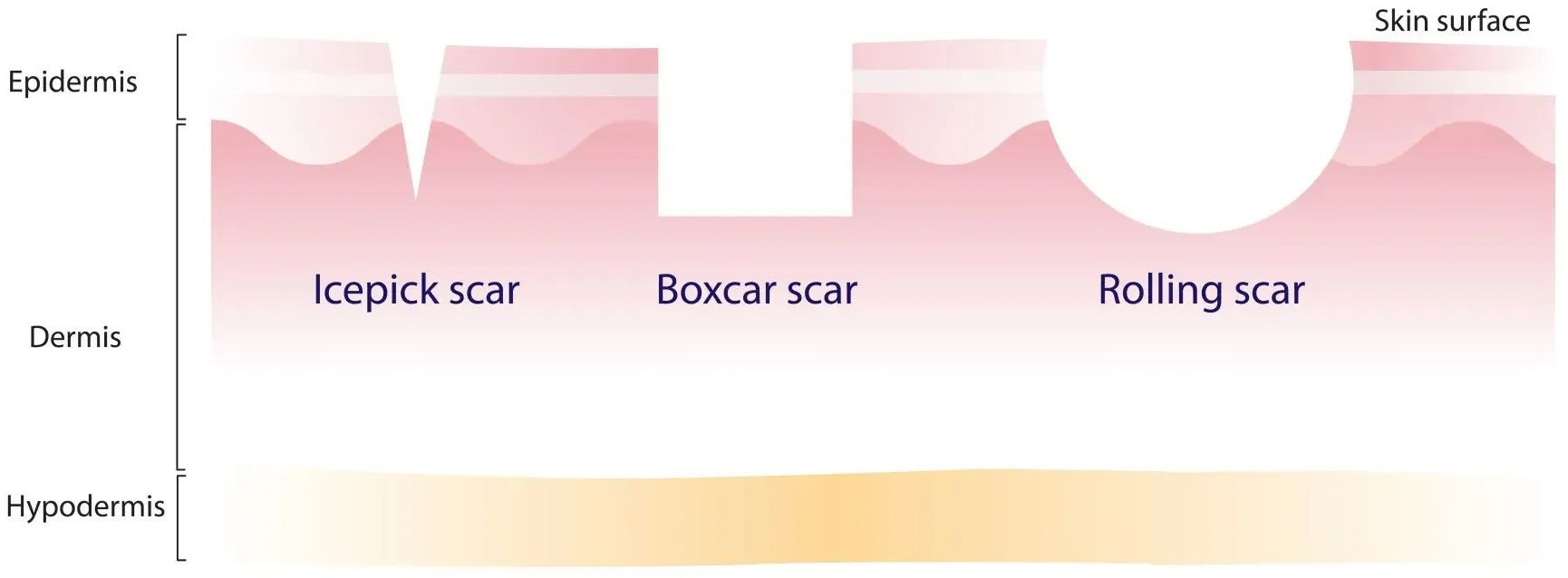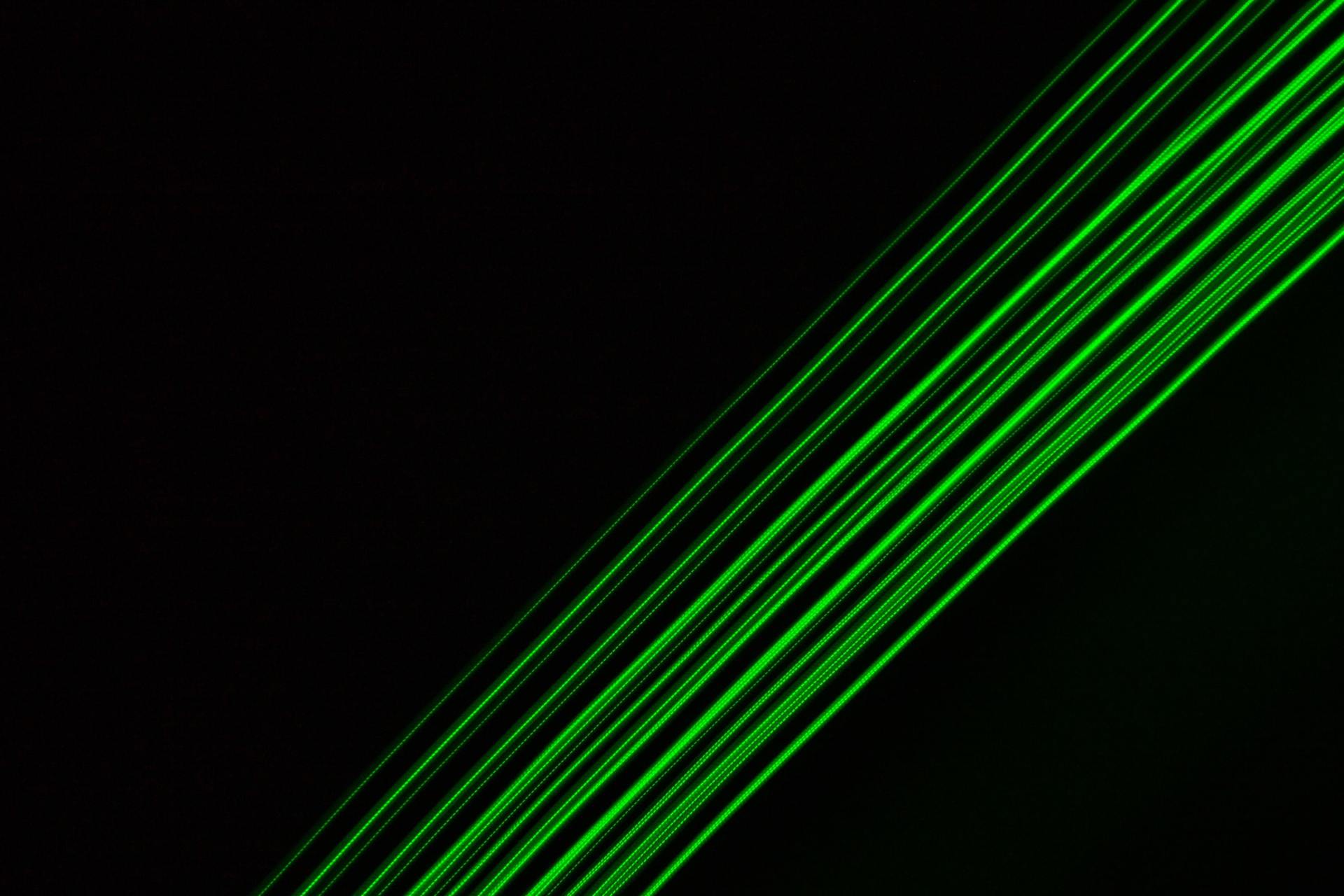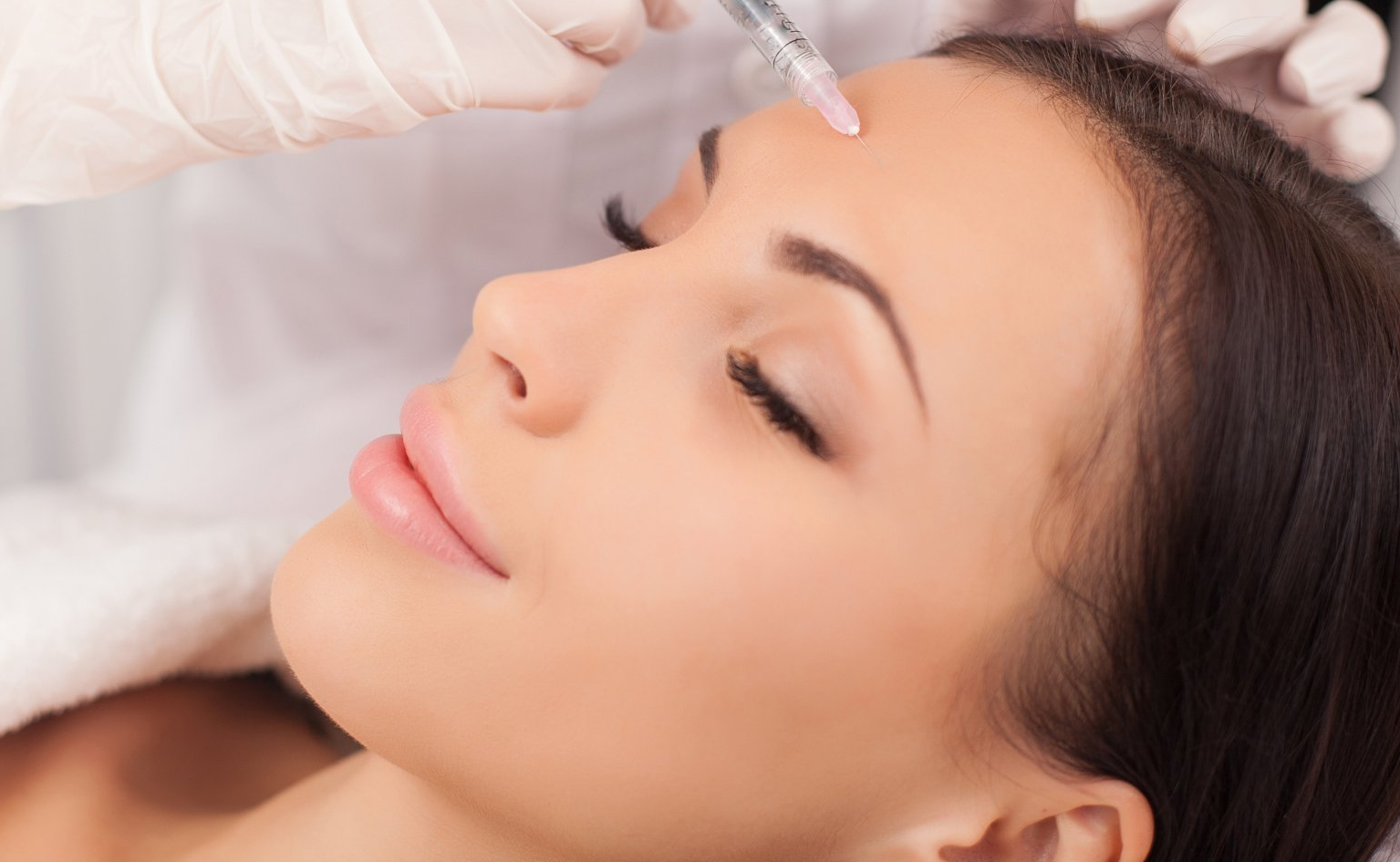Atrophic Acne Scars
Acne lesions that heal below the top layers of skin create atrophic scars, which appear as depressions or indentations in the skin. While different types of active acne cause atrophic scarring, severe cystic acne is the most common cause. The severity of atrophic scarring may vary depending on the severity of a person's acne history. Atrophic acne scars have three different subtypes. The most common types of atrophic scars are:
- Ice pick
- Boxcar
- Rolling
Atrophic scars result from the loss of collagen during the skin’s inflammatory healing process. The localized degradation of collagen and subcutaneous fat causes the affected area to dip below the level of healthy skin tissue. The type of atrophic scar that tends to form varies for each person. Here are the most common causes of atrophic scarring:
- Chicken pox
- Shingles
- Vaccine shot
- Insect/spider bite
- Acne
- Trauma
Boxcar Scars
Boxcar scars are typically round or square depressions, with sharp demarcations and vertical walls. Boxcar scars vary in depth, but the base of boxcar scars is usually flat and the same size as the scar's opening at the skin's surface. This type of scarring typically forms in areas where the skin is relatively thicker, such as the lower cheeks and jaw.
Although boxcar scars can be treated with a variety of procedures, many of them, including laser, dermabrasion, and microneedling, work superficially and are ineffective for deeper scars. At our clinic, subcision, punch excision, and collagen stimulators are the most effective and long-lasting treatment options for especially deep boxcar scars. We will perform a thorough evaluation of each of your boxcar scars to customize your treatment plan.
Ice Pick Scars
Ice pick scars are more narrow, smaller indentations that extend deep into the skin's layers (into the dermis, and even into the subcutaneous tissue). The scar's opening is wider and tapers off at the base, creating an ice pick-like shape. Because icepick scars penetrate the skin's deeper layers, they typically require more aggressive acne scarring procedures. Ice pick scars are common on the cheek area. They can also appear on the forehead and nose.
In general, ice pick scars have repeatedly been shown to respond well to phenol CROSS, our frontline treatment method. However, patients with more severe ice pick scars may benefit more from punch excision, a process in which a small “cookie-cutter” tool is used to punch out the ice pick scar. In this manner, we ensure that the scar is removed in its entirety, as opposed to other treatments that merely treat the surface.
Rolling Scars
Rolling scars vary in depth and have sloping edges that create a wavy, uneven appearance. These scars develop when fibrous tissue tethers the epidermis to the underlying subcutaneous tissue, creating sloping and wave-like indentations in the skin. Rolling scars are shallow and soft depressions that become more noticeable when skin ages and loses its elasticity. Rolling scars can disappear over time but may require intervention depending on their severity.
Because rolling scars are the softest among the different scar types, they respond the best to subcision followed by collagen stimulation. We will perform a thorough evaluation of your rolling scars to assess their severity and depth to determine what layers will need to be subcised. It is important to manually sever the fibrotic tethers in multiple layers to completely remodel the skin. Any treatments that do not target these tethers will not solve the root cause of rolling scars.
Different from atrophic scars, hypertrophic scars and keloid scars are types of acne scar overgrowth. Hypertrophic scars are raised scars that do not grow beyond the size of the original acne lesions. In contrast, keloid scars are raised scars that grow beyond the size of the original acne lesions, and appear as if though they "mushroom" out from the location of the lesion.
These scars generally have the following characteristics:
- Shiny luster
- Rubbery texture
- Raised
- Hairless
Hypertrophic and keloid scars are common on the back, chest, jawline, and shoulders. Also, people with darker skin are more likely to develop hypertrophic and keloid scarring.
Keloid scars generally result from injury to the skin, including damage from chickenpox, acne, post-surgical scarring, lacerations, and more. These scars are commonly observed on the ear lobe, chest, shoulder, and upper back. Some individuals are especially prone to developing keloid scars, notably Asian and Black individuals. Keloid scars may start off small in the beginning but can grow noticeably larger over time.
Listed below are common causes for keloid scars:
- Burns
- Surgery
- Piercings
- Chicken pox
- Shingles
- Vaccine shot
- Insect/spider bite
- Acne
- Trauma
- Cuts
Because keloid scars are characterized as overgrowths, Kenalog or steroid injections can be used to reduce the size of the keloid scar. These injections work by breaking the collagen fibers within the scar tissue. Surgical removal of the keloid can also be carefully performed, leaving minimal scars afterwards. Cryotherapy can treat smaller keloids by freezing and killing scar tissue in a controlled manner. Lastly, laser therapy may help improve the color and appearance of keloid scars, although laser therapy alone may not be able to remove the scar tissue entirely.




